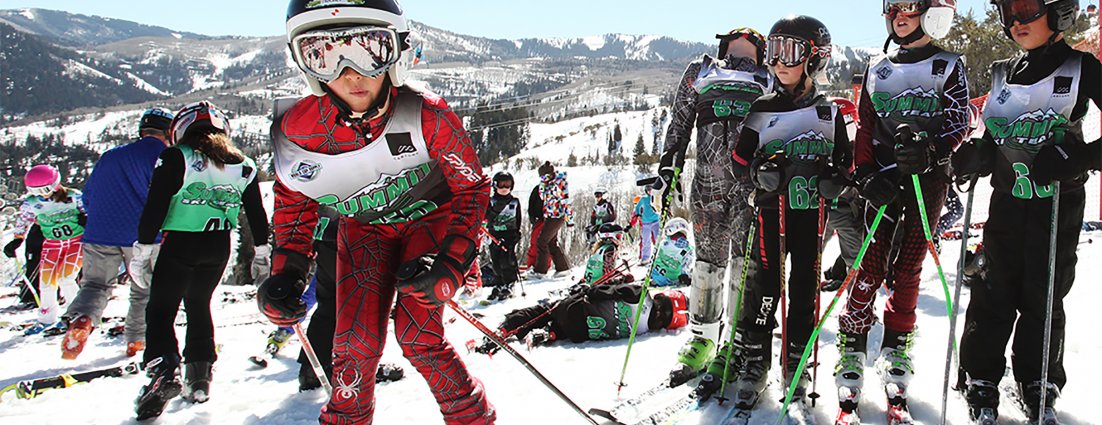Are You Training the Right Amount?
08.17.2017 | Sean Higgins

As we head into the NASTAR winter season this month, it's time to consider how much you are training. Although there may be no "perfect" formula, U.S. Ski & Snowboard is on track to decipher exactly how much you need to be training dependent upon your developmental stage. Over 10 years ago, USSA unveiled discipline specific poster-sized training system matrices that adorned the walls of clubs and coaches’ offices across the country. The multicolored boxes with pictures of youngsters and national team athletes alike aimed to set guidelines for things like training volumes and skill development at various ages. Last year, U.S. Ski & Snowboard unveiled reworked training systems aimed at sport-specific skills that dive into greater depth than ever before.
U.S. Ski & Snowboard’s Director of Sport Education, Jon Casson has been hard at work for the last year updating the various sports systems and hopes that the new systems will provide a clearer roadmap to success for athletes and coaches going forward.
“The original training systems were an offshoot to essentially the long-term athlete development model,” explains Casson.
Long-term athlete development, or LTAD, is a model that describes what athletes should be focusing on at specific stages in their development.
“In 2006, we came up with these training systems matrices. Basically what we did was start to define what aspects at each phase of development the athletes should know or should be competent in as they move through the phases,” he says.
Casson says that although the original systems were a good starting point, he feels that they were too broad and had a lot of areas that could be more tailored towards the specific sports underneath U.S. Ski & Snowboard’s umbrella.
“We wanted to add more detail to it,” he says. “We wanted to add more specificity to it and give coaches, clubs, athletes, and parents kind of a more detailed guideline of really what it takes to get to the highest levels of the sport.”
This time around, U.S. Ski & Snowboard is foregoing the posters and is instead planning for easily downloadable content on its website that can be printed out into booklets for coaches to reference throughout the season.
Image Credit: Hank deVre
Within the new alpine training system, there are now seven domains: Physical development, physical fitness, technique, tactics, equipment, mental training, and competition. Each of these seven domains is then broken down into various elements and benchmarks that can be tracked throughout an athlete’s development.
Casson explains that he really wants to focus on evaluating athletes in three specific areas. First, their chronological age, second, their biological age, and third, the time they have spent in their chosen sport. Biological age is particularly important, especially for younger athletes, as physical maturity can vary greatly as children grow. For example, a child born in January and a child born in December of the same year might be the same chronological age and compete in the same age group but have much different physical maturity levels.
Another area of importance that Casson says is all too often forgotten about with young athletes is how being on the proper equipment can greatly affect an athlete’s development, for better or worse.
“Equipment is a huge aspect, often an overlooked aspect, I think,” he says. “For example, if you have a kid who is eight years old and is a total string bean and you put them on super stiff skis, they can’t make that ski bend. That kid could get frustrated, the coach could get frustrated, and the parents could get frustrated when in essence it’s really an equipment issue, not an athlete issue.”
It is Casson’s hope that coaches will take the new system and use the information to map out effective training plans for their athletes of various ages and skill levels. Taking into consideration the development phases outlined in the matrix, determining how much training is appropriate for each athlete and whether it should be structured freeskiing, drills, or gates should be easier than ever before.
“Right now, we’re actually working on getting some data from some of our top-level clubs on how much training volume they offer at each phase of development,” explains Casson. “We want to benchmark that against some studies that have been done, which include the Leever Study. We want to put it in terms of hours instead of runs or number of gates. We want to find a good balance to recommend to our clubs and coaches between something that’s tangible for them and specific enough without saying, ‘You need to ski 10,000 gates.’”
As always, an open dialogue between athletes, parents, and coaches is essential in putting together an effective training plan.
